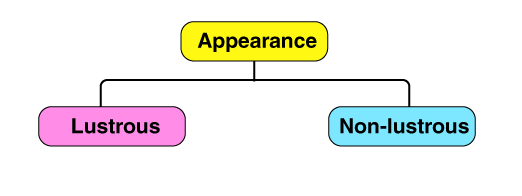According to the CBSE Syllabus 2023-24, this chapter has been renumbered as Chapter 2.
The things, which we all use in our daily life are made up of different types of materials. All these materials have mass, shape and are classified based on many criteria, including their physical states, properties of materials, etc.
Properties of Materials
Based on the different properties, materials can be differentiated into their respective groups. Listed below are the properties of materials.
- At first, the materials can be sorted into their groups based on the 3 states of matter- Solids, liquids and gases.
- The second criteria used for sorting the materials is based on their appearance. The appearance of materials varies in colour, texture, hardness, softness and lustre.
- The third criteria used to sort the materials are based on their solubility. The solubility depends on soluble and insoluble materials in water. For example,- Salt and sugar are soluble in water. Chalk and sand are insoluble in water.
- The fourth criteria used to sort the materials is based on the metal and non-metals. Iron, copper, and gold are examples of metals and coal, chalk, rubber are examples of non-metals.
- The fifth criteria used to sort the materials is based on the light transmission through objects, which includes Opaque, Translucent and Transparent.
Introduction
Classification
Materials can be classified based on several properties:
- Transparency
- Hardness
- Soluble and Insoluble
- Float and Sink
Need for classification
Classification makes everything easier and orderly for better understanding.
How are materials classified?
Materials are classified based on similarities in their properties, such as appearance, hardness, transparency, solubility or density.
To know more about Materials and Their Classification, visit the link below;
Materials and Their Classification
Appearance
Polishing
- Metal polishing acts as a protective shield against metal surfaces because it stops oxidation.
- It is a method of improving the durability and texture of metal surfaces as they are much less likely to wear or corrode.
Classification based on appearance

- Materials can be differentiated from each other based on their looks.
- Some, like diamond and gold, are shiny and are termed lustrous materials.
- Some other materials, like graphite and wood, do not appear shiny and are generally known as non-lustrous materials.
Hardness
Toughness
The property of material to withstand stress without breaking is termed as toughness.
A material with high strength and high ductility will have more toughness than a material with low strength and high ductility.
Classification based on the hardness

- Materials that can be compressed or deformed easily are referred to as soft substances.
- Whereas materials that are difficult to bend or compress are termed hard substances.
Solubility
Classification Based on Solubility
- Some substances completely disappear or dissolve in water. These substances are soluble in water.
- Other substances do not mix with water and do not disappear even after we stir for a long time. These substances are insoluble in water.
Floatation
Buoyancy
The upward force applied by the fluid on the object or the body when an object is put in or submerged in the fluid is termed as Buoyancy.
Classification based on buoyancy
Materials can be classified based on the sinking of floating in water:
- A leaf floats on water
- A metal spoon will sink into the water
Density
Density is defined as mass per volume. You can think of it as the amount of particles of a substance are packed into a certain amount of space.
- If the particles are packed tightly together, the density would be greater than if they are loosely packed with a lot of empty space around them.
- This is taken as mass per unit volume of a given object. The SI unit is kg/m3.
- Density is the reason some objects sink, and other objects float.
Transparency
Transparency
Materials can be grouped into three main categories based on their ability to transmit light.
Classification based on transparency

- An object which allows visible light to pass through it is called a transparent object. We can clearly see through a transparent object. E.g.:- glass, fish tank.
- An object, which allows partial passage to light is called a translucent object. E.g.:-plastic bottle, paper cup.
- An object which does not allow passage to light is called an opaque object. We cannot see through an opaque object. E.g.:-wood, metals.
| Three States of Matter | Objects around Us |
| Sorting Material Into Groups | Properties Of Metals And Non-Metals |
Frequently Asked Questions on CBSE Class 6 Science Notes Chapter 4 Sorting Materials into Groups
What is buoyancy?
The upward force applied by the fluid on the object or the body when an object is put in or submerged in the fluid is termed Buoyancy.
Name some transparent materials.
1. Air 2. Water 3. Clear glass4. Plastic
What are lustrous materials?
Lustrous materials are those that have a shine on them. Metals are lustrous. Due to this property, metals are widely used for making jewellery.
Comments